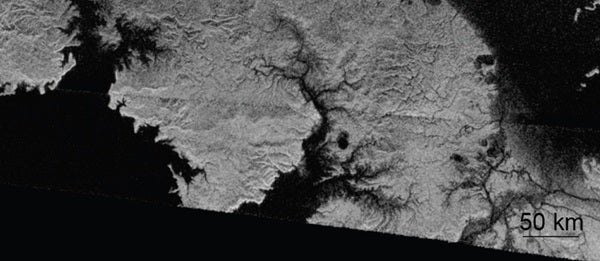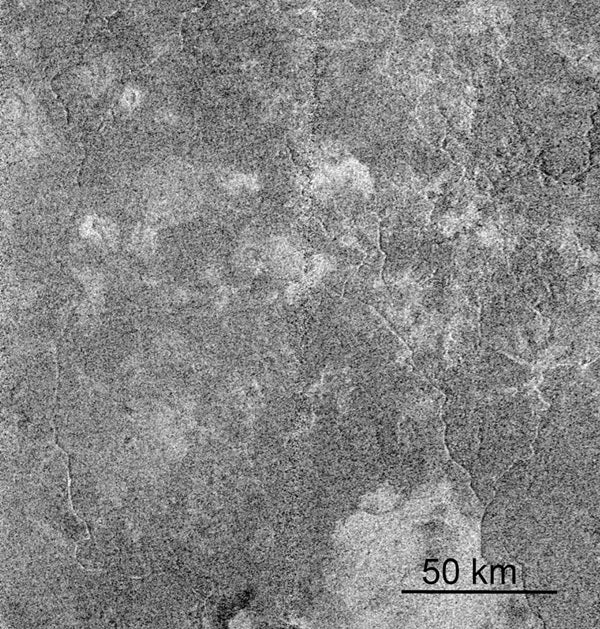A team of international scientists led by Mirjam Langhans, from the German Aerospace Center Deutschen Zentrums für Luft- und Raumfahrt (DLR), presented the first results of a global analysis of spatial patterns, occurrence, and origin of river channels on Titan at the European Planetary Science Congress in Potsdam, Germany.
To date, scientists have focused their investigations on single channels due to the fact that radar and spectral data have been captured only for some narrow areas of the surface below the thick nitrogen atmosphere of this mysterious moon of Saturn. This data jigsaw puzzle is being filled in through more flybys of Titan by NASA’s Cassini spacecraft. Now, for the first time, the DLR team has developed a global perspective of the deposits of liquid hydrocarbons, such as methane and ethane, and their affected forms of erosion.
In addition to Earth, Titan is the only body in the solar system where liquids directly have been proven to exist. The moon’s exceptionally thick atmosphere, where chemical reactions occur at freezing temperatures of -290° Fahrenheit (-179° Celsius), makes this second largest moon of the solar system of special interest for planetary science.
On this equatorial band, bright continent areas and extensive dune regions can be distinguished. Dark spots on the continent areas are of special interest because they are supposed to be fluvial deposits. Additional radar data show channels precisely linked to them, which are dry, canyon-like, and broadly distributed.
Towards the north pole, the picture is much richer. There is a dense network of branching, active river systems similar to those on Earth. They are visible down to small tributaries on radar images and can be seen flowing into multiple lakes. Contrastingly, hardly any channels are found at the south pole.
“The observations of the extensive river structures at the north pole have led the team to a fascinating conclusion Ᾱ there must be heavy and frequent rain of liquid hydrocarbons. The measured channels provide the first clues about the composition and relative age of different regions of Titan,” said Langhans.











